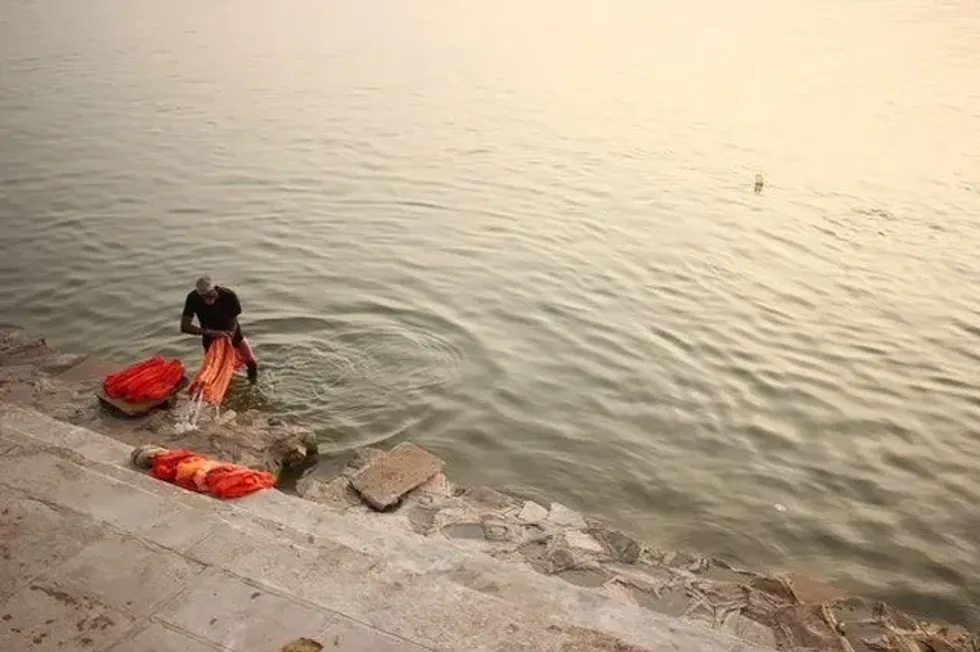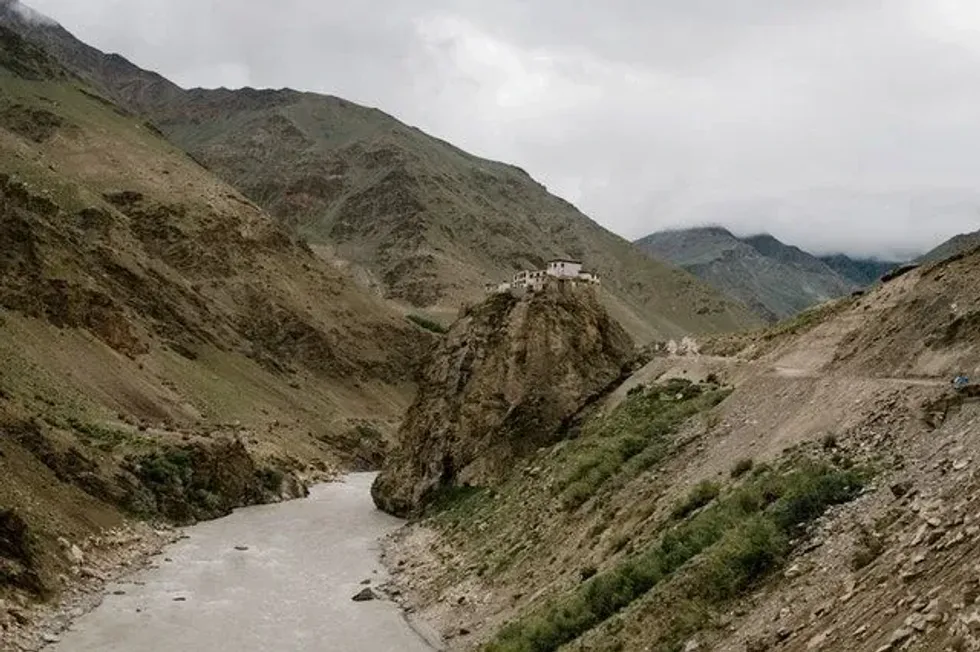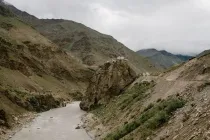Most Important River In India And Astonishing Fun Facts

Indian civilizations are believed to be built on the largest river banks areas.
The largest river network of important rivers was responsible historically for facilitating the economy with agriculture and fishing. The rivers were sacred to indigenous people and used to get denominated after the name of god.
The Himalayan rivers system is separated into the northwestern Indus and eastern Ganga Brahmaputra River systems and their various major rivers. This whole river system remains runny for the entire year because they are watered by melting snow and glaciers.
But these important rivers tend to overflow in the monsoon, which leads to frequent floods every year. Indus River and the Brahmaputra are the largest among the other 19 rivers in this system.
The Indus River, otherwise known as the Puranik River, streams through the longest path from Tibet, then via Ladakh. It covers Gilgit-Baltistan and then descends in the Arabian Sea.
Indus River usually conveys a drainage amount of 26.5 cu mi (110 cu km). In this journey, the mainstream goes through places with major rivers like Zaskar, Shyok, Hunza, Nubra, Ravi, Chenab River, Sutlej River, Beas River, and Jhelum with a comprehensive real estate of 1975.96 mi (3180 km).
India was denominated after the Indus River. Sutlej River, also known as the Satadree, encompasses the states of Punjab, Rajasthan, and Haryana in India.
Emerged from Gangotri, Bhagirathi and gets consolidated with Alaknanda from where the cohesion of Ganga River emerges. Yamuna, Son, Damodar, Punpun are the right tributaries, and Gandak, Gomti, Kosi, Ghaghara become the left tributaries of this river.
Via Uttarakhand, Uttar Pradesh, Bihar, the stream flows through Rajmahal, and further southeast then gains access to Farakka, West Bengal. Then bifurcates, the tributary crosses the threshold of Bangladesh with the name of Padma.
Hooghly River, one of the main tributary with an extension of 1568.96 mi (2525 km), encompasses the district of Murshidabad, Kolkata, and Howrah. Brahmaputra River is the second-largest globally with a comprehensive extension of 1801.97 mi (2900 km), getting started from 16896.33 ft (5150 m) of the high aerial surface of the Himalayas, north Kailash.
It plunges into the Bay of Bengal via Tibet, Bhutan, India, and Bangladesh.
It stumbles upon India via Arunachal Pradesh, where it gets bucked up with Dibang and Lohit. River Godavari, Krishna River, Mahanadi, Cauvery River, these prominent ones tend to go eastside to get plunged into the Bay of Bengal.
Godavari River is also the major river in this system. The second largest one after Ganga, the Godavari River, emerges from Nashik, Maharashtra, and dives into the Bay of Bengal.
History Of The Most Important River In India
By 350-290 BCE, the Ganges was introduced with the Greek mediator Megasthenes.
In accordance with Mahabharata, the river Ganga was denominated after goddess Ganga, father Himavat, and mother, Mena. In a disintegrating relationship with King Santanu, Ganga was seen to suffocate her children.
Hindu mythology depicted when Vishnu, as a dwarf brahmin, was crossing the universe, Ganga became an outcome. The compulsion of Vishnu's big toe made a hollow space in-universe and blurted out some water from the Mandakini River.
King Bhagiratha got to know that Vedic sage Kapila burnt down King Sagara's 60,000 antecedents with a stare. Bhagiratha asked Kapila what to do to facilitate their way to heaven, and the solution was to pray and have ascetics for 1000 years.
Because of his religious zeal, the great god made Ganga descend to Earth for the ablution of 60,000 souls.
But the descendent process might affect the Earth, so Shiva helped her descend with his hair through 1000 years. When she came across Bhagiratha, he navigated her through India, and she spread over with tributaries.
It is believed that Arti and Death accomplished their asceticism here. Skanda emerged from the seed of Shiva and got carried by Ganga. Manu, the first man by Matsya Purana, tossed a humongous fish in Ganga, which escalated over time and runoff.
The Ganges became an interception of heaven and Earth. It is believed the interception point, tirtha, facilitated the transactions of offerings and blessings between Earth and god. Kumbha Mela gets accommodated by the banks since the seventh century CE.
With an estimation of 100 million people, this venue gets sacred and gets rid of misfortune for Hindus. Varanasi, the oldest inhabited city, is aligned with the river Ganga. The goddess is conceptualized on a crocodile, wearing a white saree. Ganga is materialized along with goddess Yamuna.
Facts About The Biggest River In India
Ganges River lies between India and Bangladesh. Ganga is ranked as India's number one national waterway by geographical authorities.
In India, the Ganga River encompasses various states like Uttarakhand, Bihar, Jharkhand, Uttar Pradesh, West Bengal, and multiple cities like Kanpur, Jajmau, Mirzapur, Allahabad, Varanasi, Buxar, Ballia, Patna, Bhagalpur, Hardiwar, Rishikesh, Mungar, Farrukhabad with major rivers Ramganga, Ghaghara, Gandaki, Gomti, Koshi, Burhi Gandak, Tamsa, Punpun, Son, and Mahananda tributaries.
It is watered by the Gangotri glaciers, monsoon rains, and cyclones.
In accordance with 2007 data, the Ganges basin holds the remark by fifth in pollution globally with a range of 416,990 sq mi (1079999.14 sq km). A considerable proportion of bird species are dependent on Ganga, but some were victimized by pollution and became endangered, such as the Ganger River dolphin and shark.
The river banks are prolific, and it facilitates the agricultural structure.
Ganga tends to fasten the decomposition process at a 25 times faster pace. It has been found that mosquito procreation and cholera bacterium are not possible here.

Facts About The Deepest River In India
Among all the major rivers in India, Brahmaputra snatched the title of being the deepest river with a basin area of 251,481 sq mi (651,334 sq km).
The stream holds a range of 100 ft (30 m) minimum and 440 ft (135 m) maximum depth. The banks are fertile and good enough to bear every kind of crops, mainly sugarcane, lentils, legumes, chilies, jute, wheat, potatoes, sesame, and mustard are the common ones to get cultivated.
Industries and events dependent on major rivers aqua activity are functional here, such as the fishing and tourism industry.
Tributaries Of The Most Important River In India
The tributaries are divided into two parts: to the right (the Yamuna, Son, Mahananda, Chambal) and to the left (Mahakhali, Koshi, Gandak, Damodar Ghaghra, Karnali) tributaries.
Yamuna River is the biggest and prime tributary among all the tributaries in the northern parts of India, made its appearance from Banderpooch crests, lower Himalaya. Yamuna River was denominated after the deity Yami.
Yami is basically Surya, Saranyu's daughter, and Yama was her sibling. In accordance with Puranas, the river Yamuna influenced various Hindu-driven historical religious myths, such as the anecdote of the Naga snake; Kaliya used to dwell here and kept intimidating the Braja folks.
The stream encompasses Uttarakhand, Uttar Pradesh, Haryana, Triveni Sangam, and Allahabad. The river Yamuna drainage area takes the largest proportion of the Ganga watershed.
A significant percentage of residential and industrial amenities of Delhi, Mathura, Agra, Kalpi, Etawah rely on the Yamuna. It has a real estate of 855 mi (1376 km) with its other major rivers, Tons, Chambal, Sindh, Betwa, Kunta, Hanuman Ganga, Hindon, Giri, Rishiganga, Ken, and Sarda.
Chambal River became prominent in central India among all. Chambal was denominated after chamda in the initial phase but later named Charmanvati.
Animals used to get slaughtered and allotted to their native deities in Yagyas. Chambal River covers a significant percentage of real estate, about 596 mi (960 km) in the Gangetic catchment area. By accordance with UNESCO, Sunderbans, the largest delta in the world, was constructed upon this stream globally.
Fun Facts About The Most Important River In India
Apart from its etymology and mythology, Ganga has so much more facts to offer, being India's holiest river.
Ganga serves a large proportion of the population in India. It holds a record of carrying humongous amounts of sewage.
The lack of oxygen in water promotes anaerobic bacteria, causing putrefaction, although it got a self-purification mechanism. The government had initiated the Namami Gange Programme with a more than 272 million dollar USD package for marginalizing pollution and an attempt to resurrect a pristine state by accommodating afforestation, biodiversity conservation, surface cleaning, and generating public awareness.
Water shortages should be a vital concern as well. Suppose the whole portion of Varanasi used to have a depth of 200 ft (60 m), now it has dissipated to 33 ft (10 m) in some parts.
To retain these coal-fed power plants, diesel-powered tankers and groundwater pumps were deployed, but the continuation of these patches is enough to affect the environment.
Illegal mining has become an enormous issue lately in Haridwar, Uttarakhand, in the search for these valuable stones and gems. This process started at plains, and in the Kumbh Mela areas, excavation got banned.
Did You Know?
Penganga, Indravati, Pranhita, and Manjra tributaries cover the states of Maharashtra, Madhya Pradesh, Orissa, Chhattisgarh, and Andhra Pradesh. Mahanadi River emerges from Sihawa, Raipur, then via Orissa.
It is prominent in east-central India and tumbles into the Bay of Bengal. Some of the Mahanadi River tributaries happen to be Sheonath, Hasdeo, lb, Mand, Tel, Jonk, Ong. Ravishankar Sagar Project, The Dudhawa Reservoir Project, Hirakud Dam project are running on the Godavari River with 54,826.50 sq mi (142,000 sq km) of drainage area.
48% of the totality is in Orissa, and the rest lies in Madhya Pradesh, Chhattisgarh via Sambalpur, Cuttack, and Banki. Krishna River is the second in the system, and it holds the fourth rank in India.
Krishna River emerges from Mahabaleshwar, Sahyadri, and falls into the Bay of Bengal via Maharashtra, Karnataka, Telangana, and Andhra Pradesh. Tungabhadra River is the largest tributary of this river. Krishna River covers 800.32 mi (1288 km) of real estate.
Koyna, the Warna Major Irrigation Project, is running on the Narmada River. In addition, the Kaveri River arises from Talakaveri, Western Ghats, and via Karnataka, Kerala, Tamilnadu, and Pudducherry, it falls into the Bay of Bengal.
Kaveri River covers an area of 31334.12 sq mi (81,155 sq km) where Hemavati, Shimsha, Arkavati, Moyari, Kabini, Bhavani, Noyill, Honnuhole, and Amaravati are some significant tributaries of this Kaveri River.
Krishna Raja Sagar Dam Project is running on the river Kaveri, and it facilitates agriculture. River Narmada is the largest and oldest west-flowing river with an area of 815.23 mi (1312 km).
It lies between the east and west side of India via the Gulf of Khambhat to the Arabian Sea, and it divides the northern and southern sides of India.
Kolar, Dudhi, Sher, Uri, Tawa became prime tributaries of this river along the Indira Sagar Dam. The Sardar Sarovar Dam is functional on this stream.
Tapti River emerges from east Satpura mountain and via Maharashtra, Gujrat, Madhya Pradesh, Gulf of Khambat. It tumbles into the Arabian Sea with a range of 449.87 mi (724 km). Vaghur, Mona, Gomai, Vaki, Girna, Bori, and Purna are some of the prime tributaries of the Tapti River.
The Ukai Project and The Kakrapar Project are functional upon this stream. The Arvari river is remarked as the smallest in India.
Aner River emerges from Satpura hills and exists in the Tapti basin. Mahi River emerges from Vindhya Range mountain, and then via Rajasthan, it falls into the Arabian Sea with a real estate of 15,444.08 sq mi (40,000 sq km).
It intercepts the Tropic of Cancer with Som, Panam, and Anas tributaries. Mahi and Kadana hydroelectric projects are running on this stream.
We Want Your Photos!
More for You
Bachelor of Science specializing in Nautical Science

Ayan BanerjeeBachelor of Science specializing in Nautical Science
Thanks to his degree in nautical science from T.S. Chanakya, IMU Navi Mumbai Campus, Ayan excels at producing high-quality content across a range of genres, with a strong foundation in technical writing. Ayan's contributions as an esteemed member of the editorial board of The Indian Cadet magazine and a valued member of the Chanakya Literary Committee showcase his writing skills. In his free time, Ayan stays active through sports such as badminton, table tennis, trekking, and running marathons. His passion for travel and music also inspire his writing, providing valuable insights.
Bachelor of Arts specializing in English Literature, Masters of Art specializing in English and Communication Skills

Sonali RawatBachelor of Arts specializing in English Literature, Masters of Art specializing in English and Communication Skills
Sonali has a Bachelor's degree in English literature from Guru Gobind Singh Indraprastha University and is currently pursuing a Master's in English and Communication from Christ University. With considerable experience in writing about lifestyle topics, including travel and health, she has a passion for Japanese culture, especially fashion, and anime, and has written on the subject before. Sonali has event managed a creative-writing festival and coordinated a student magazine at her university. Her favorite authors are Toni Morrison and Anita Desai.
Disclaimer
1) Kidadl is independent and to make our service free to you the reader we are supported by advertising. We hope you love our recommendations for products and services! What we suggest is selected independently by the Kidadl team. If you purchase using the Buy Now button we may earn a small commission. This does not influence our choices. Prices are correct and items are available at the time the article was published but we cannot guarantee that on the time of reading. Please note that Kidadl is a participant in the Amazon Services LLC Associates Program, an affiliate advertising program designed to provide a means for sites to earn advertising fees by advertising and linking to Amazon. We also link to other websites, but are not responsible for their content.
2) At Kidadl, we strive to recommend the very best activities and events. We will always aim to give you accurate information at the date of publication - however, information does change, so it’s important you do your own research, double-check and make the decision that is right for your family. We recognise that not all activities and ideas are appropriate for all children and families or in all circumstances. Our recommended activities are based on age but these are a guide. We recommend that these ideas are used as inspiration, that ideas are undertaken with appropriate adult supervision, and that each adult uses their own discretion and knowledge of their children to consider the safety and suitability. Kidadl cannot accept liability for the execution of these ideas, and parental supervision is advised at all times, as safety is paramount. Anyone using the information provided by Kidadl does so at their own risk and we can not accept liability if things go wrong.
3) Because we are an educational resource, we have quotes and facts about a range of historical and modern figures. We do not endorse the actions of or rhetoric of all the people included in these collections, but we think they are important for growing minds to learn about under the guidance of parents or guardians.







